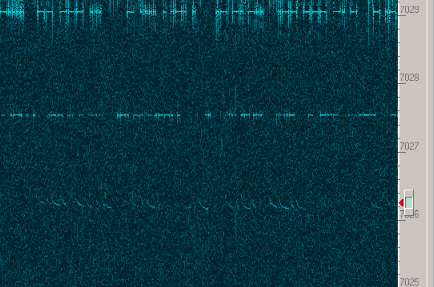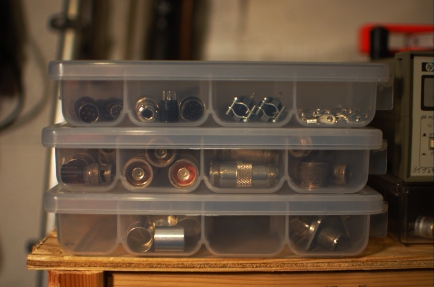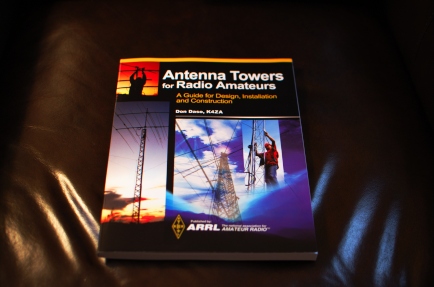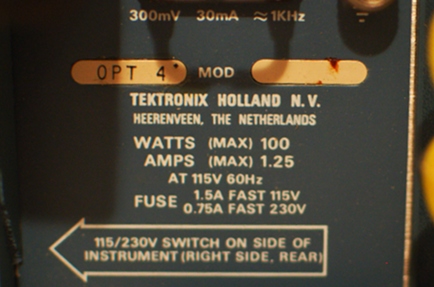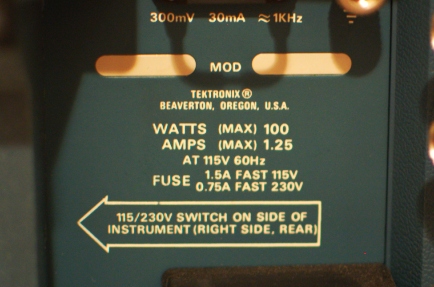Teaching Evan the basics of radar signal processing with this baby-block 7-bit Barker code and its matched filter.
Archive for the ‘education’ category
7-bit Barker Code and Matched Filter
January 8th, 2012Fascinating signals: AA1TJ/QRPp
August 17th, 2011Last night, as I have been doing lately in both the evenings and mornings, I was trawling the bands with a SoftRock (a dual-band v6.0 built for 40 and 80 meters—my first SoftRock) and Rocky. Without fail, the waterfall enables me to see something interesting, which brings me to the point that I really need to integrate these receivers into my station. But, I digress. The really tantalizing, fascinating signals are the weak ones, especially when they are weak and unusual.
The subject weak and unusual signal is shown in the figure headlining this post. Rocky’s cursor shows the approximate bandwidth of the CW filter (250 Hz, if I recall correctly) and the center frequency (7026.25 MHz). I tuned it in and caught a CQ from “AA1T…” Recalling that I head read about Mike, AA1TJ‘s, Das DereLicht transmitter built mostly from parts scavenged from a dead CFL, I suspected it was him. After a moment the QSB came up and I caught the ‘J.’ Thanks to the fact that the SDR is not fully integrated into the station, I scrambled to plug my 15-year-old Small Wonder SW-40 in and get it online. Mid-scramble, Sarah handed Evan off to me for a diaper change, but I did manage to snap the screenshot above. By the time I returned to the shack awhile later to close things down, AA1TJ had disappeared.
Through the (ubiquitous) magic of the Internet, I sent Mike an apologetic e-mail QSL, which yielded a nice response. It turns out that he was trying a 40-meter version of the first transistor transmitter described in the amateur literature. The design for 146 MHz by K2AH appears in March 1953 QST. If you are an ARRL member, pull up those old QSTs in the archives and read about it. K2AH is on the cover of February 1953 QST with the same transmitter. Mike figures he was making 20 mW, or 20650 miles/Watt on the path from his station to mine. The more remarkable thing is that he was using a 1956-era point-contact transistor (the same type as in the K2AH article). Fascinating stuff! Hopefully, we’ll connect for a real over-the-air QSO sometime soon.
Thanks, Mike, for making my day by doing something interesting and sharing it on the air!
The Joy of Homebrew
May 18th, 2011This is about building electronics, not making beer, at home; although, I am sure there are parallels. Three things brought me to writing this: 1. an eHam forum thread I responded to a few weeks ago; 2. the June 2011 issue of IEEE Microwave magazine (has articles by K2UYH, N2UO, and KK7B, perhaps others? thanks to W3KL via the PVRC reflector for bringing it to my attention since I let my IEEE/MTT membership lapse); and 3. a few minutes spent last night resuming a partially-completed Softrock kit gifted to me by a friend who decided to buy a FLEX-3000 instead.
Every once in a while, a thread appears on an amateur radio forum that goes a little bit like this, “Hi, I’m a new ham and I don’t have a lot of money to spend so I want to build an HF SSB station from scratch” or something similar. Somehow, somewhere, somebody has given the impression that it is less expensive to build your own amateur radio equipment than to buy it. That’s true in some circumstances, but certainly rarely for anything that is mature, mass-produced, and readily-available on the second-hand market. After all, there is nothing novel about a 100-watt superheterodyne HF SSB transceiver these days. The principal uncounted cost is the “engineering cost” associated with getting your first few projects working and keeping them working.
One of the first construction projects I undertook as a new ham was to build a Ramsey Electronics HR-20 (NE602-based) 20-meter receiver—$20 at a hamfest. It did actually work eventually—but this was a simple kit with maybe two dozen parts. Next, I built a ONER transmitter kit from now defunct 624 Kits. I think that was another $20. I never made any QSOs with that combination because I was always afraid of blowing out the receiver with the transmitter. The first thing that I built that I actually managed to make a QSO with was a Small Wonder Labs SW-40, which I still have. That set me back $55 and it did not work immediately. Suddenly, that’s over $100 by the time you include the money I spent on a soldering iron and solder. That’s one-third to half-way to a “real” used HF transceiver and I had two bands at 1 watt on CW only. Furthermore—these are all kits—they leverage economies of scale in purchasing parts from various vendors and they have instructions to help you along. And, I’d like to think that I was a relatively representative example of a recently-minted ham who had more ambition than money or skills…
As I soldered down 1206-size (easy ones) SMT capacitors last night, I was thinking of times that I rushed through a homebrew or kit project just to get it on the air. In those instances the process was often, as I have belabored above, about saving money, not about the act of creating something. Last night was about creating, not saving, and that is the joy of homebrew.
Marrying the TI-85 and the DJ-580T
April 13th, 2011The May issue of QST arrived in the mail today and an article about building a “fox” for hidden-transmitter hunting was included. That brought back memories of a teenage project of mine that I had once thought of writing up for QST, but now just makes a good story for the blog.
The first (and only) handheld radio I’ve owned is an Alinco DJ-580T. Like most HTs of a certain age, it has provision for an external (“speaker”) microphone. The microphone input is a sub-miniature (3/32-inch, “2.5 mm”) stereo phone plug. As a high school student, one of my passions was tinkering with a graphing calculator—the venerable Texas Instruments TI-85—do kids these days even use this stuff or have they gone the way of slide rules and nomograms? The TI-85 offered the provision to link to a computer or another calculator through a similar sub-miniature stereo phone plug.
Well, one afternoon in probably 1997, I was sitting with the DJ-580T in one hand and the TI-85 in the other…and it hit me…I wonder if I can use the the TI-85 to drive the DJ-580T microphone input?
A few preliminaries are now in order. Thanks to a helpful (and still operational, albeit now with a CMS and the attendant spam) web site called ticalc.org, a few friends and I had learned to load our TI-85s with third-party binary machine code programs with considerably faster execution times than the built-in scripting language. This allowed us to play relatively powerful video games surreptitiously on a school-sanctioned platform…a tactic that worked well until the English teacher wisened up to the fact that the five students with their calculators out were not typing essays on them. Not satisfied to just play games—although I did set a very high score in Tetris during Spanish class—I sought to harness the power of the Z80 microprocessor in the TI-85 for myself. Recall that this was before widely-available and inexpensive microcontroller development systems like the PIC, Arduino, and AVR.
I gathered the tools and eventually managed to write some fairly sophisticated (given my utter lack of formal training in computing) software in Z80 assembly language, including a crude clone of Space Invaders and a crude adventure game I called “Kashmir.” Maybe some screenshots or stories about them will come later.
But, for the story at hand, I learned how to manipulate the link port. Fortunately, the sleeve was ground on both the TI-85 and the DJ-580T. So, it was just a matter of tip and ring—one was audio and the other was PTT on the radio, and both were settable on the TI-85 for some kind of two-wire communication link. So, I reasoned that I could write up a bit of assembly code that would key the PTT by pulling it low, then toggle the audio line back and forth at 500 Hz or so to generate a rough audio tone. It worked!
This was an expensive, although trivially so since I had the hardware, way to build a hidden transmitter. So, I modified the software to send my callsign in Morse code (using a look-up table) and stuffed the whole thing in a cigar box. It was good fun for a few of us teenage boys.
And, for the interested, I found the original source code, which is sadly not well commented or dated. But, it does have my old callsign (AA8UP) listed by the lookup table.
Review: K4ZA Tower Book
April 13th, 2011As I have commented before, I don’t generally review or endorse products on the blog. However, I was organizing my aluminum/steel pile in the back yard recently and posed a question to the PVRC reflector about potential improvements to a 402BA-S that I uncovered. One of the responses came from K4ZA, who is a well-known “tower-guy.” (His blog is a pretty good read, too!) I’ve been meaning to buy a copy of his book Antenna Towers for Radio Amateurs and I told him as much when I thanked him for his reply. He offered a copy at a small discount from the cover price and I bought it. It’s the second autographed ARRL book I have, the other being the 4th edition of ON4UN’s Low Band DXing, but I digress.
I’ve been at this whole radio thing for a few years now and have picked up a lot of the tricks. Since most of what I know about towers comes from a high-school summer job in the two-way business, chatting with “The Good Reverend,” and installing HF research radars, Don’s book really filled in the gaps for me. It is good…I read it cover-to-cover.
Don spent a career in video production before getting into the tower business full-time and it shows. He knows the importance of telling the story to impart a trade. He also includes candid stories from tower owners and workers explaining techniques and nearly-averted disasters from their own perspective. Not only is it informative, the book entertains as well.
Antenna Towers for Radio Amateurs pretty much covers everything you need to know about planning, procuring, constructing, and maintaining your tower and antenna system—everything from how to evaluate the ubiquitous used tower sections to which tools and safety equipment to buy. After reading it, you should be in a good position to understand how much of the tower-building process you are able to do yourself and how much to rely on local experts and professionals. It is an excellent book and deserves a spot on the shelf of every ham who owns or dreams of owning a tower—and a few research radar scientists and engineers…
Great Idea: Light Painting WiFi
March 21st, 2011Saw this in my Google Reader at work and had to post. Apply to work, ham radio, …? It’s clearly an artist’s take and not an engineer’s.
Locality Bias
January 3rd, 2011Slate Labs has an “interactive tool” to look at food deserts in the U.S. by county—places where a healthy variety of food is unavailable. They define a metric of desertification by counting the number of people who do not have access (not sure how this is defined) to a car AND live farther than one mile from a supermarket (not sure how this is defined, either). So, I went looking at some places I’ve lived.
My home county is Holmes County, Ohio. If you look at the map, it’s the one that’s an island of dark brown in the middle of Ohio. 27.91 percent of Holmes County is a food desert by this metric! Blame it on the Amish. Because the county is rural, there are few grocery stores. And, because the Amish do not have access to their own cars, they count a large portion of this population. Other counties with large Amish populations (relative to the non-Amish population) also stand out clearly.
It also appears that the map is distorted by population density, with sparsely populated areas being more prone to classification as food deserts. Is this fair? Is there anything that can be reasonably done about these areas even if they are food deserts? I don’t at all disagree that this is an important, significant problem, but it seems that there might have been a better metric. Perhaps it’s the most accessible metric with the available data?
Although this map may be revealing in many ways, it also distorts the reality a bit. For me, it’s a reminder to not consume “news infographics” too casually. I haven’t read all of the comments on the Slate piece and probably won’t. So, forgive me if someone has already noted some of the above. As a final note, most of the people who write for Slate are relatively ignorant of what happens in the part of the country between the Coast Ranges and the Appalachians. So, as one commenter wrote, it’s a “typical urbanite view” of food.
“Electricity is NOT a toy”
January 2nd, 2011The ARRL 10-meter (28-MHz) contest was a couple of weeks ago. Given that I had bothered to install a 10-meter antenna at this QTH and that conditions seem to be improving, I thought it would be fun to play.
I fired up CQing on Saturday and after a few minutes, Sarah appeared at the shack doorway. This usually means that something is broken or I’m causing RFI to something she wants to be using. Since I’m not KT0R, who used to tell his neighbors that he was “busy and please come back on Monday,” I obliged her. It was the CO detector again. I unplugged it (it’s battery-backed, so it just means that contesting burns through 9-volt batteries) and returned to the game. Peace reigned again in the Miller household.
Sneaking in a little bit of contesting before church on Sunday morning is a long-standing habit of mine, although it seems that the Sunday openings are usually better than the Saturday openings. Today was no exception. I was working hard to extract a few QSOs out of what appeared to be a mostly dead band and Sarah again showed up at the shack doorway—this time with wet hair and quite agitated.
“The outlet is popping when I plug the hair-dryer into it!”
I assured her that I would take care of it, adding that it was “probably just the radio getting into the GFI. Let me send a few dits and see if it starts clicking.”
“No, you stay there, I’ll send the dits. How do you do it?”
“Just press the left paddle.”
And so, Sarah made her first ham radio transmission on 10-meter CW this morning (after which I did identify, for the record). I confirmed that the outlet made a little click. She was not completely convinced, but I told her I would shut down while she dried her hair so I could monitor the situation.
The hairdryer (a prior unit), Sarah, and I have had run-ins before. Several years ago, when we were poor graduate students, a loose screw was causing a nasty vibration in the old hairdryer. So, I tightened it up and gave it back to her, not knowing that there was another screw floating around inside the case. One morning, that screw found its way into the motor and sparked. When Sarah called me on the phone, I thought she’d burnt the house down. As much as it pains me, I no longer attempt to fix any appliances that cost less than $50 as a result of this episode.
Still worked up, Sarah took the opportunity to grill me about the compatibility of contesting with family life…”When have children, how will you hear them if they’re in trouble and you have your headphones on? (In jest, I later proposed wiring a baby monitor into the SOnR audio chain.) Can’t you listen with the speaker? How will we keep them from eating your little parts, bits of wire, and globs of solder? Electricity is not a toy!”
We laughed at the last one. And she added, “I hope they’re all girls who want everything hot pink—so much hot pink that we want to barf.”
I suppose if someone makes a hot-pink Hello Kitty AK-47 (the photo actually looks like a painting of an AR-15) and the Sarah-cuda bow, we can find hot-pink solder irons, paddle finger pieces, headphones, and even radios (I seem to recall that there was a BabyPhat mod’ed hot-pink Motorola HT floating around the web a few years ago).
Anyhow, this post is for Sarah because she puts up with a lot of tinkering, RFI, and headphone time and gets very little blog recognition in return for it.
(The photo above is of Ft Rock, Oregon, taken by me when I was on assignment there.)
Noting Differences: Tektronix 464s
July 21st, 2010Through the usual twists of fate and my inability to pass up a good deal on high-quality used/vintage electronics, I ended up with a pair of Tektronix 464 100-MHz oscilloscopes that were not quite fully functional. To be correct, one actually belongs to my father, but until it’s working it’s essentially mine. I did the first check out tonight and noticed something curious when I looked at the nameplate on the backs of the scopes:
Aside from the fact that the first one has Option 4 (increased EMI resistance—in other words, increased PITB factor when assembling/disassembling), what else is different/interesting? After I noticed it, I was not surprised that one of the units had Option 4…
Exceeding Tolerance
July 20th, 2010I read IEEE Spectrum via my Google Reader (and, as an IEEE member, in hard copy). One of the disappointing things about Spectrum is that it’s written predominantly by people who are science and technology writers, not actual scientists and engineers. Therefore, it’s a little more sensational than what I’d like (I can read that stuff in Wired). But, I digress. I was pleased, however, to see an article today entitled Low Tech Fixes for High Tech Gizmos.
The author wistfully lists all of the things she’s fixed with duct tape and hot-melt glue…
This is really anecdotal evidence of the fact that many non-catestrophic device failures are due to failures of tolerance. That is, the device (or some of its components) are operating outside their expectations in the design. This is especially true of mechanical tolerances in low end injection molded consumer devices. As manufacturers seek to save more, tolerances get tighter. Cleaning, replacing batteries, disassembly/reassembly, etc, are all examples of the same class of repair.
I just repaired a toy boat for Sarah’s cousin’s son tonight. It had dead batteries and a gear was pressed too far onto the motor shaft causing the motor to stall. It’s a good reminder to look for the tolerance failures, even if that sounds like obvious advice.

